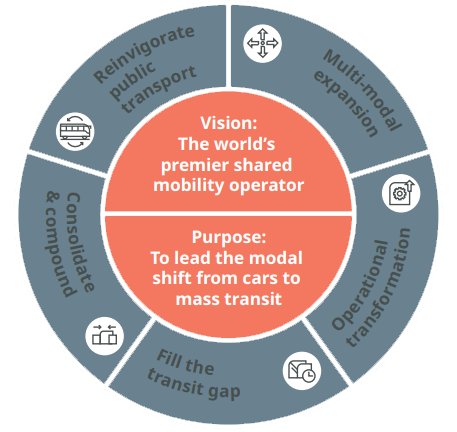Around 70% of the Group’s revenue is generated from contracts, where payment is typically made by a public transport authority, a school board or a corporate entity. The remaining circa 30% of revenue comes from individual passengers directly purchasing tickets from the Group without any contractual arrangement in place.
Just over a third of contracted revenue has a high degree of protection. This means that all of substantially all of the revenue on those contracts is pre-determined regardless of fluctuations in passenger numbers. For example, payment could be based on mileage and therefore the payment is not affected by fluctuations in occupancy. This category principally comprises “gross cost” contracts, which includes many of the urban bus contracts in ALSA, plus the majority of the rail contracts in Germany. Similarly a proportion of School Bus contracts have minimum operating days protection and are therefore included in this category.
40% of contracted revenue has a medium level of protection. This is where the customer has the right to vary the demand requirement, such as routes run or volume of services offered. The majority of School Bus is in this category.
The remainder of contracted revenue, around a quarter, has demand exposure. These are referred to as “net cost” contracts.
42% have a high level of protection, which means the costs are either “pass through” or have a highly effective index mechanism. For example the annual price rise calculation could include a specific link to a wage index, providing effective protection against wage inflation.
A further 43% offer medium protection. This is where the annual price rises are based on a general inflation index (e.g. CPI) and therefore provide a good level of protection but ate exposed if certain costs, such as fuel or wages, inflate by more than the general index.
Only about 15% of our contract costs have low protection. This is defined as being where we have fixed price rises built into the contract. Whilst this offers good protection if cost inflation is in line with the fixed price rises set at the outset of the contract, there is exposure if cost inflation exceeds those levels.
